What flowers to plant in the fall in the country?
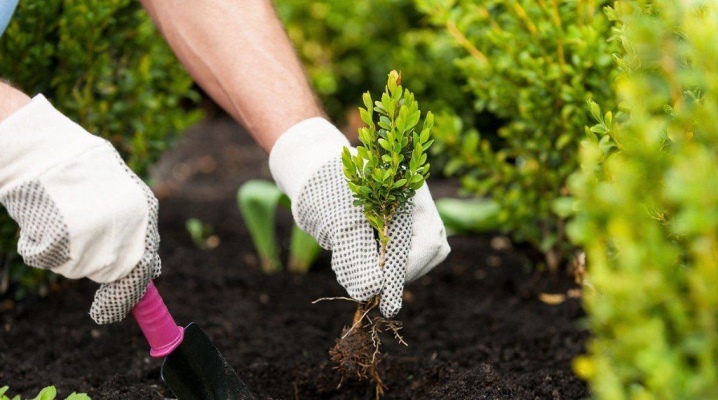
In order for the personal plot to delight with bright colors and aromas throughout the summer season, experienced gardeners plant annual and perennial flowers in advance. Most often, this procedure is carried out in the fall - this allows the planting material to undergo natural stratification during the winter. Consider what annuals and perennials are most often planted in the fall in the country, what recommendations should be followed when planting flower crops in the fall.
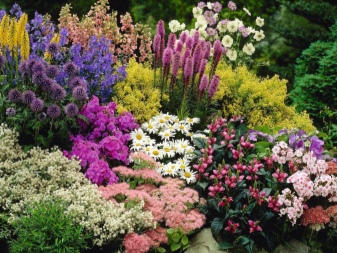
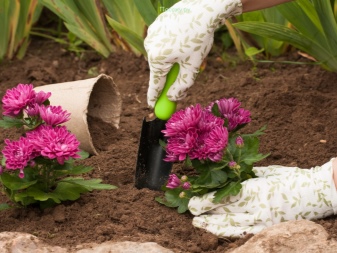
What annuals to plant?
For autumn sowing, experienced gardeners usually use seeds of unpretentious annuals with early, abundant and long flowering... Below are the names of the most popular annual flowers that can take root in almost all types of soil.
Many of them bloom not only in spring and summer, but also in autumn - until the onset of the first cold weather.
Aster
Annual cold-resistant asters, sown before winter, are distinguished by strong immunity, resistance to damage by pests and pathogens of various diseases... They bloom 2-3 weeks earlier than expected. For autumn sowing, seeds of pompom varieties are usually used. Sowing dates depend on the growing region. So, in the Urals and Siberia, asters are sown in the ground at the end of September, in the Moscow region - at the end of October. In the southern regions, it is allowed to sow seeds in November.
Seeds are sown in shallow grooves arranged in sunny corners of the garden. The recommended planting depth is about 2 cm. After sowing, the seeds are sprinkled with dry garden soil without fertilizers and insulated with spruce branches or straw.
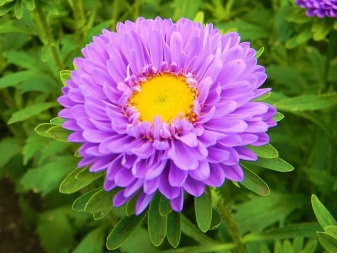
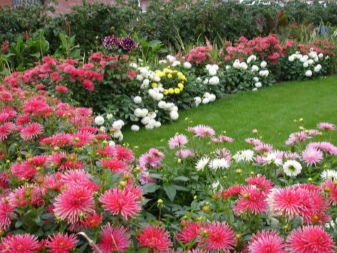
Calendula
The seeds of this unpretentious medicinal plant are planted in flower beds and ridges with the onset of persistent night frosts (but before the soil freezes). The planting depth of seeds should not exceed 2.5 cm.The recommended distance between seeds is 8-10 cm. Such varieties of garden calendula as "Gitana", "Pacific", "Bon Bon".

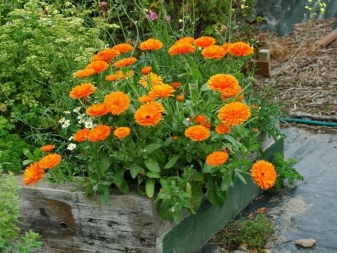
Kosmeya
This beautifully flowering hardy crop can be grown even on poor, infertile soils, giving it a place protected from drafts. Cosme seeds are sown in shallow grooves, after which they are sprinkled with a thin layer of peat. It is undesirable to deeply embed the planting material in the ground - this will complicate the germination of seedlings.
The most spectacular varieties of cosme are Sonata, Pikoti, and Sensation.
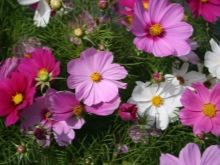
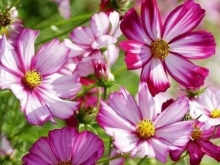
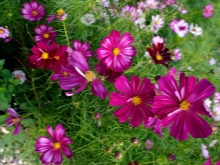
Lavatera
Sowing seeds of lavater in autumn is carried out with the onset of persistent night frosts, during the period when the daytime air temperature does not rise above 0 ° C. Sow seeds in well-lit areas with light soil. The planting depth of the seeds depends on their size. So, small seeds are sown to a depth of no more than 1 cm, medium and large - no more than 3 cm.Among the most beautiful varieties, it should be noted such as Mont Blanc, Novella, Silver Cap.
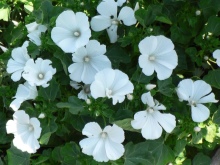
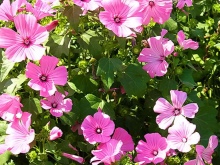
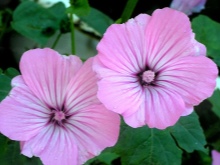
Other
There are a few more options that will brighten up any garden.
Phlox Drummond - a flowering plant that prefers to grow in sunny areas with light and fertile soil. The seeds of this culture are sown after the onset of persistent frosts. Sowing is carried out in shallow grooves, which are then covered with dry earth or peat. The beds with crops are additionally covered with spruce branches or fallen leaves.
The most beautiful varieties of phlox gardeners include "Joy", "Chanel", "Blue frost". In the spring, the emerging seedlings are thinned out, leaving the strongest and largest specimens.
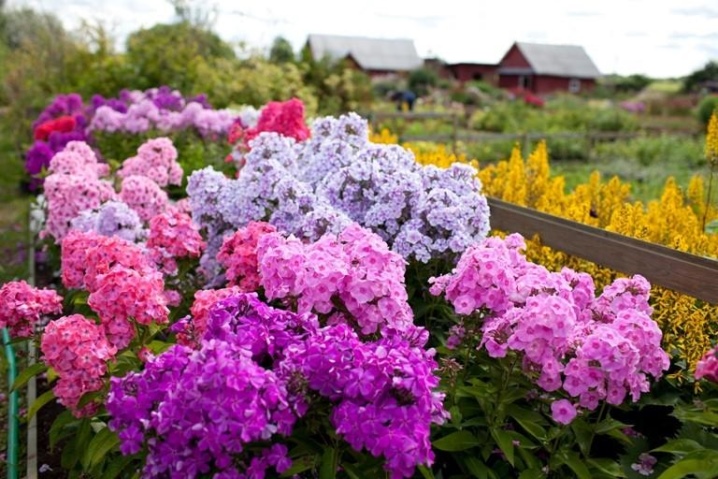
Eschsholzia - an unpretentious undersized plant that takes root well on poor soils. Sowing seeds is carried out with the onset of stable frosts, when the threat of the return of daytime heat has passed, otherwise the planting material will germinate and die. The best and most reliable way, according to some gardeners, is to sow seeds in slightly frozen ground. Seeds are sown into the grooves, after mixing the planting material with sand. After sowing, it is allowed to cover the beds with spruce branches. Among the most interesting varieties, gardeners note such as "Mandarin", "Sparkling carpet", among the most unpretentious - escholzu Lobb.
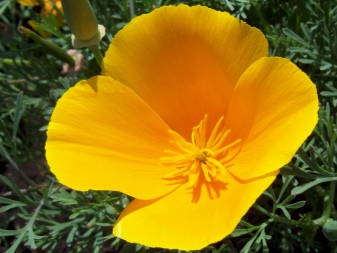
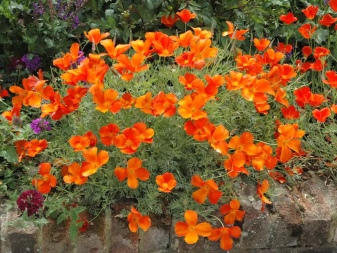
Overview of perennial flowers
When growing perennials through autumn sowing, many summer residents manage to achieve flowering of plants in the first year of their life (even if they should bloom only in the second). Below are the names of perennial flowers that are most often sown in the fall.
- Aquilegia - an original flowering plant that can take root on infertile soils and tolerate partial shade well. Sowing seeds of aquilegia is usually carried out with the onset of the first cold weather, when the soil temperature drops to minus 2-4 ° C. Seeds are sown on pre-prepared flower beds with loose soil, embedding planting material to a depth of not more than 1 cm. After sowing, it is recommended to cover the flower bed to protect the seeds from freezing. The most beautiful varieties of aquilegia are "Alaska", "Florida", "Robin".
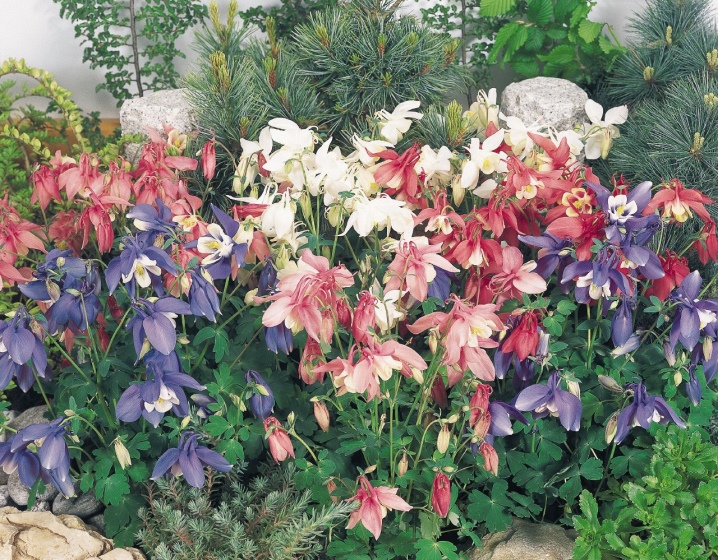
- Gaillardia - a very spectacular perennial, often used to decorate mixborders, ridges, alpine slides. This plant looks beautiful both in group and in single plantings. Sowing seeds is carried out in the usual way, embedding them in the ground at a shallow depth. After sowing, the bed is covered with covering material or insulated with spruce branches. Among the most interesting varieties gardeners note highly decorative: "Burgunder", "Primavera", "Lorenza", "Kobold".
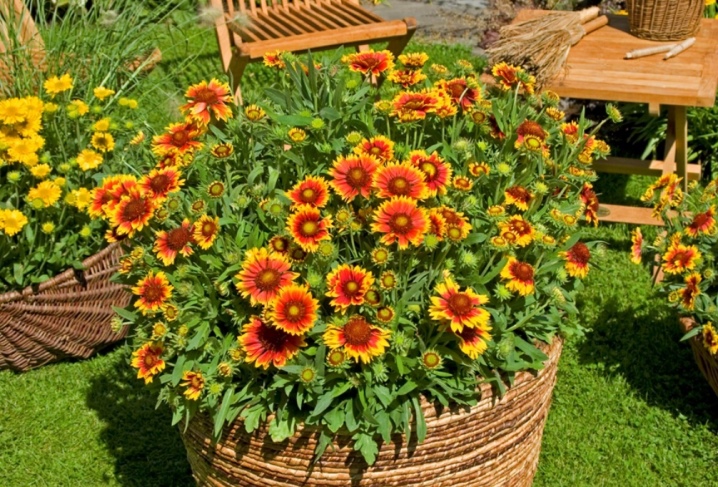
- Carpathian bell - graceful low (up to 30 cm tall) perennial that prefers to grow in sunny areas with light and well-drained soil. The plant is used by gardeners and landscape designers to decorate borders, mixborders, ridges, low flower beds, stone gardens. Seeds are sown only after the onset of stable frosts. It should be noted that when sowing bells in autumn, gardeners consume a little more seeds than when sowing in spring. The seeds are buried to a depth of no more than 2 cm, after which they are covered with dry earth and insulated with a covering material. Among the most spectacular varieties should be noted "Pearl White", "Pearl Deep Blue" and "Weiss Clips" with large bell-shaped flowers.
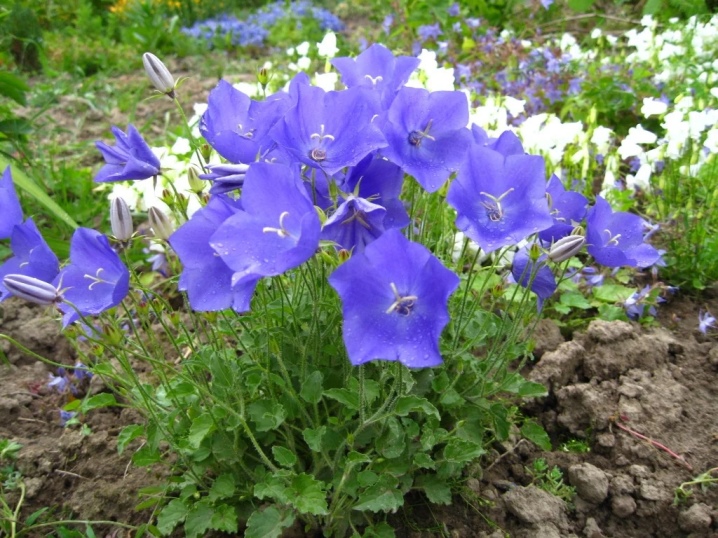
In addition to perennials grown through seeds, in the fall, gardeners plant bulbous and corms on their site.
The planting material of such plants tolerates wintering well in the open field, and with the arrival of warm days it activates and germinates quickly.
- Crocuses - low bulbous perennials blooming in March-May. Plants prefer sunny areas, but take root well in partial shade. Crocus bulbs are planted in September-October. When planting, they are guided by the size of the bulb: the larger it is, the deeper it is buried. After planting, the beds are insulated with spruce branches or covered with covering material.
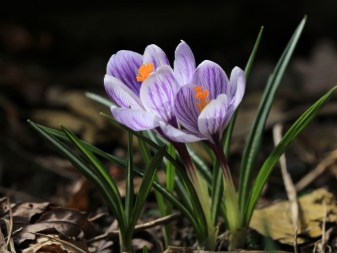

- Hyacinths - bulbous highly decorative perennials blooming in spring. Plants prefer fertile, drained soil. For breeding in central Russia, gardeners use winter-hardy varieties: "Miss Saigon", "Bismarck". The bulbs are planted in the fall, before the onset of frost.After planting, the flower beds are mulched with straw, fallen leaves or covered with spruce branches.

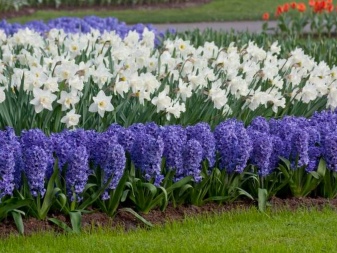
- Daffodils - charming representatives of the Amaryllis family, delighting with abundant spring flowering. These bulbous perennials prefer to grow in partial shade on loamy soils. Autumn planting of daffodil bulbs is carried out in the second half of September - early October. 2-3 weeks before planting, the soil is dug up in the flowerbed and humus, ash, as well as fertilizers containing phosphorus and potassium are added. Small bulbs are planted to a depth of about 10 cm, medium and large ones - about 14-18 cm.
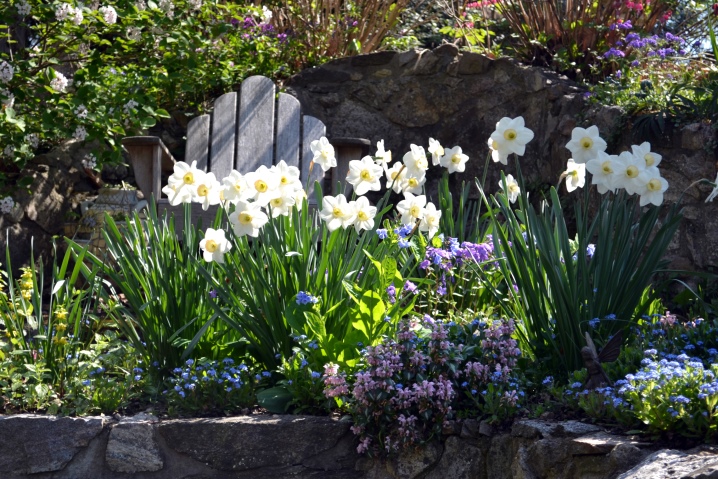
- Lilies - unpretentious perennials blooming in summer. For growing in regions with difficult climatic conditions, representatives from the "Asian hybrids" group are optimal. The planting of bulbs in autumn is carried out during a period when the air temperature stabilizes at + 10 ° C, in sunny areas with well-drained, previously dug up soil. The recommended planting depth is three times the bulb height. After planting, the holes are covered with earth and mulched with straw or leaves.
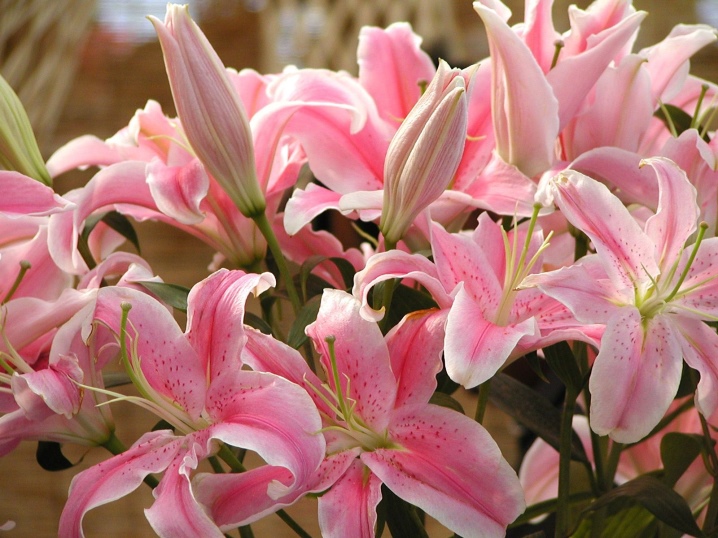
Autumn planting tips
When planting seeds and flower bulbs in the fall, it is important to take into account the climatic and weather conditions of your region. In northern and temperate latitudes, planting is usually carried out in September-October, in warm southern ones - in November.
For planting in the fall, it is necessary to select the highest quality and healthy planting material. The seeds must be fresh and dry, and the bulbs and corms must be whole and not germinated.
It is not allowed to use planting material that has damage, seedlings and shoots, traces of rotting or mold, as well as traces of pests.
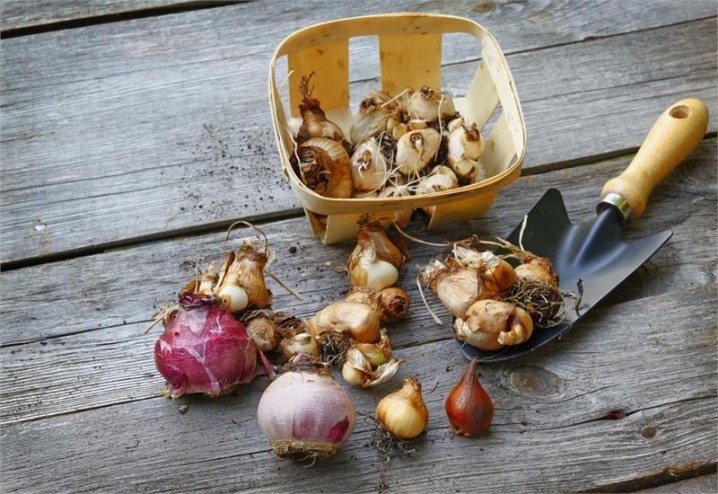
Experienced summer residents recommend giving preference to proven winter-hardy plant varieties for beginner gardeners who are first starting the selection and autumn planting of flowers.... Such varieties can be found among both annual and perennial crops.
Another important nuance that should be considered when choosing and planting annuals and perennials in the fall is the characteristics of plants. So that in the future the plants placed on the flowerbed look harmonious and fully developed, it is worth paying attention not only to the height and timing of flowering of crops, but also to their requirements for illumination, watering, structural and other features of the soil. To avoid mistakes, it is advisable to use ready-made flower beds and flower beds or develop them yourself in advance.
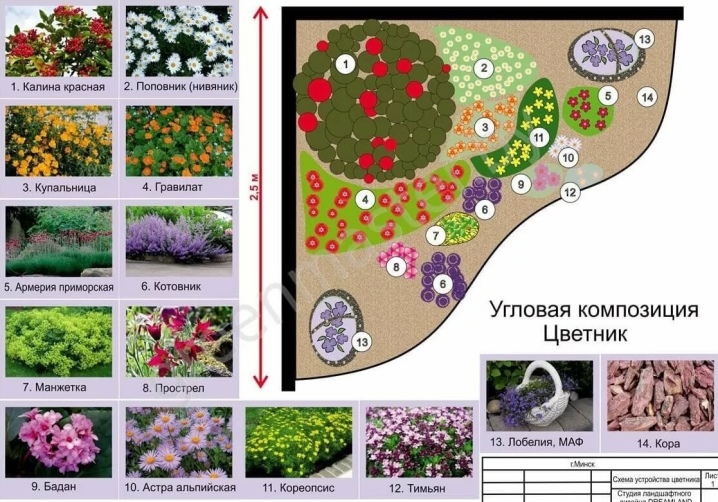







































































































The comment was sent successfully.